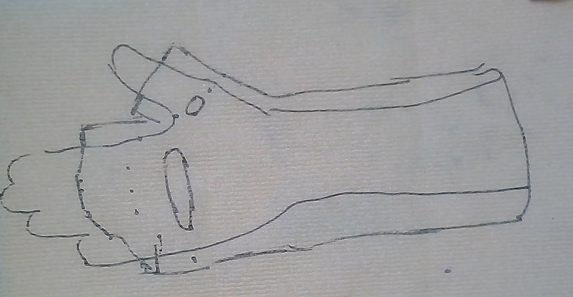
The radial nerve is the terminal continuation of the posterior cord of the brachial plexus. It contains fibers from nerve roots C5 – T1. From the axilla region, the radial nerve travels down the arm and innervates the triceps muscle. The radial nerve then descends down the arm, travelling in a shallow depression within the surface of the humerus, known as the radial groove.
The radial nerve wraps around the humerus laterally and enters the forearm anterior to the lateral epicondyle of the humerus, through the cubital fossa. The nerve then terminates by dividing into two branches:
Deep branch (motor) – innervates the muscles in the posterior compartment of the forearm.
Superficial branch (sensory) – contributes to the cutaneous innervation of the dorsal hand and fingers.
The loss of radial nerve function typically has a significant negative motor impact on an individual.
Neuropraxia is a temporary interruption of conduction without loss of axonal continuity.
In neurapraxia, there is a physiologic block of nerve conduction in the affected axons.
Other characteristics:
Axonotmesis involves loss of the relative continuity of the axon and its covering of myelin, but preservation of the connective tissue framework of the nerve (the encapsulating tissue, the epineurium and perineurium, are preserved).
There are sensory and motor deficits distal to the site of lesion.
Neurotmesis is a total severance or disruption of the entire nerve fiber. A peripheral nerve fiber contains an axon (Or long dendrite), myelin sheath (if existence), their Schwann cells, and the endoneurium. Neurotmesis may be partial or complete.
The radial nerve can be damaged in the axilla region by a dislocation at the shoulder joint, or a fracture of the proximal humerus. Occasionally, it is injured via excessive pressure on the nerve within the axilla (use of crutches) or falling asleep with the arm draped over a sofa.
The radial nerve can be damaged in the mid -shaft of the humerus, commonly during a fall and subsequent humeral fracture.
There are many different styles and designs of orthoses for radial nerve palsy. The goals are always the same:
We have created a low-profile radial nerve palsy orthosis! The beauty of this design is that it does not include high outriggers but maintains the MCP joints in extension with waistband elastic. It allows for full finger flexion and can accommodate the MCP joints in flexion with an opening. The wrist is maintained in extension, but a simple modification allows for assisted wrist extension with adjustable tension.
Source: Peck, J., & Ollason, J. (2015). Low profile radial nerve palsy orthosis with radial and ulnar deviation. Journal of Hand Therapy, 28(4), 421-424.